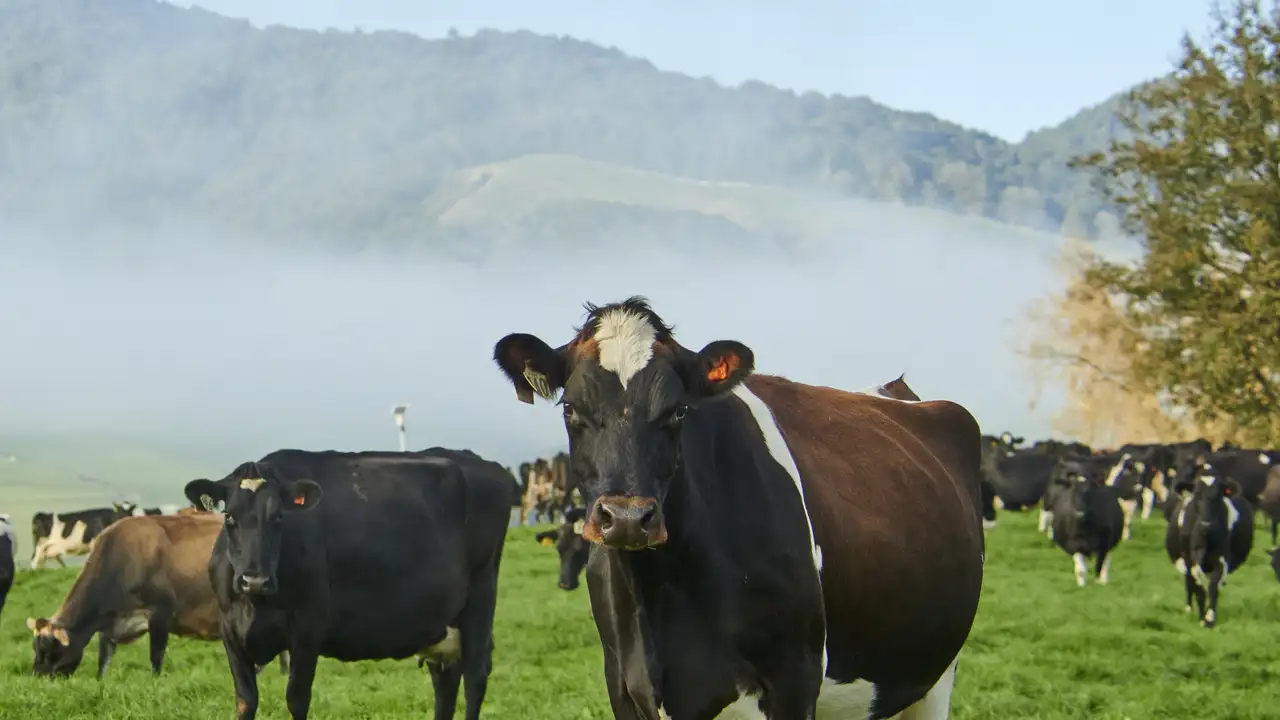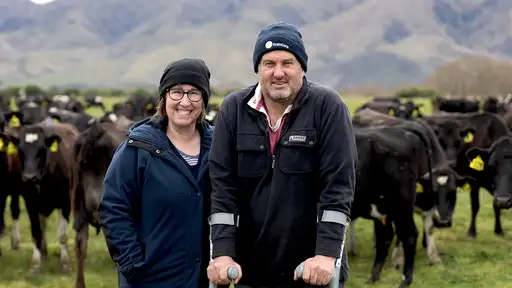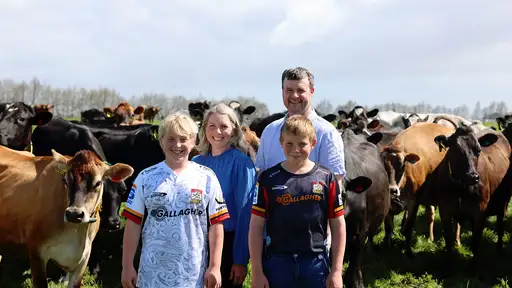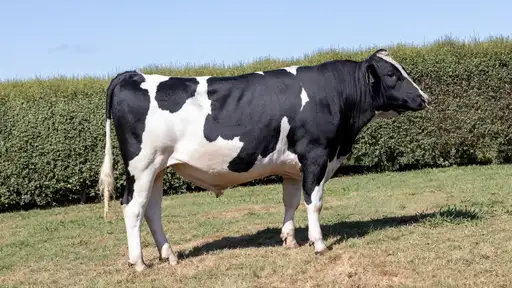New Zealand dairy farmers are achieving more with fewer cows, shown through record milk production per cow and continued genetic progress.
The latest New Zealand Dairy Statistics 2024/25, released by DairyNZ and Livestock Improvement Corporation (LIC), reveals total milksolids production rose 2.9 percent in 2024/25 to 1.94 billion kilograms, despite a 0.5 percent fall in cow numbers to 4.68 million.
The lift was driven by record-high productivity per cow, with the average cow producing 414 kilograms of milksolids, which is up 14kg from last season.
DairyNZ chief executive Campbell Parker says the results reflect farmers’ strong focus on performance and adaptability despite a range of challenges over the past few years.
“Farmers continue to focus on doing things smarter and driving productivity, including managing their herds more efficiently, improving feed use, and leveraging science and technology to lift production per cow, while also responding to higher milk prices last season,” says Campbell.
“The trend towards fewer, larger herds is continuing, but the focus on high-performing, healthy animals remains strong, with fewer cows producing more milk. It’s a real credit to farmers’ skill, resilience, and ongoing investment in herd improvement and farm management. That combination of efficiency and innovation keeps New Zealand dairy farming at the forefront internationally.”
Meanwhile, herd improvement activity strengthened notably in 2024/25, with farmers continuing to invest in data and genetics to support long-term gains.
A total of 3.84 million cows were herd-tested, which is a 5 percent increase from last season, with 82 percent of the national herd now tested in 2024/25. The proportion of cows mated to artificial breeding (AB) also increased slightly to 81.5 percent.
LIC Chief Executive David Chin highlights farmers’ strong commitment to genetic progress and herd performance, driven by their focus to lift productivity across their businesses.
“Farmers now have access to the most accurate data and advanced genetic tools ever available, and they’re using these to make very smart, highly targeted breeding decisions,” says David.
“The record milk production per cow is no coincidence. It’s the result of decades of genetic improvement and a relentless focus on cow efficiency. Genomic evaluations, milk quality, and herd testing have all become integral as farmers identify and breed from their top-performing cows.”
David notes that the long-term trend towards crossbreeding is another sign of farmers’ focus on breeding a balanced, fertile and highly efficient herd.
“Holstein-Friesian/Jersey crossbreds now account for just over 61 percent of the national herd. This reflects farmers’ confidence in cows that combine strong production with high milksolids, good conformation and fertility — key traits for a resilient national herd.”
The average dairy co-operative payout (including dividends) was $10.75 per kilogram of milksolids, an increase from $8.90 in the previous season. When adjusted for inflation, the 2024/25 payout was $0.90 above the five-year inflation-adjusted average of $9.25 per kilogram of milksolids.
Campbell says that dairy farmers continue to play a large role in contributing to the New Zealand economy.
“Looking ahead to the current 2025/26 season, we will likely see the impacts from the extreme wet weather experienced in some regions during spring flow through. However, there are some positives, with strong production at the start of the season, accompanied by a stronger than average retro payment and reduced interest rates, which will likely improve the cash position of many farmers.”
Key statistics from the New Zealand Dairy Statistics 2024/25 report
- The dairy sector produced 21 billion litres of milk, containing 1.94 billion kilograms of milksolids, which is a 2.3% increase in milk volume and a 2.9% increase in milksolids processed compared with the previous season.
- Average milk production per cow was 414 kg of milksolids (made up of 234 kilograms of milkfat and 181kg of protein), which was the highest on record.
- Cow numbers decreased to 4.68 million cows, a 0.5% decrease on the previous season.
- A total of 3.84 million cows were herd tested, which is 82.1% of cows, and 77.2% of total herds.
- 3.8 million cows were mated to artificial breeding, which is 81.5% of total cows mated to AB.
- The trend of increasing breeding worth and production worth continued across all breeds.
- The average dairy co-operative payout of $10.75 per kg of milksolids, $0.90 above the five-year inflation-adjusted average of $9.85 per kg of milksolids.
Access the full report at dairynz.co.nz/dairy-stats





